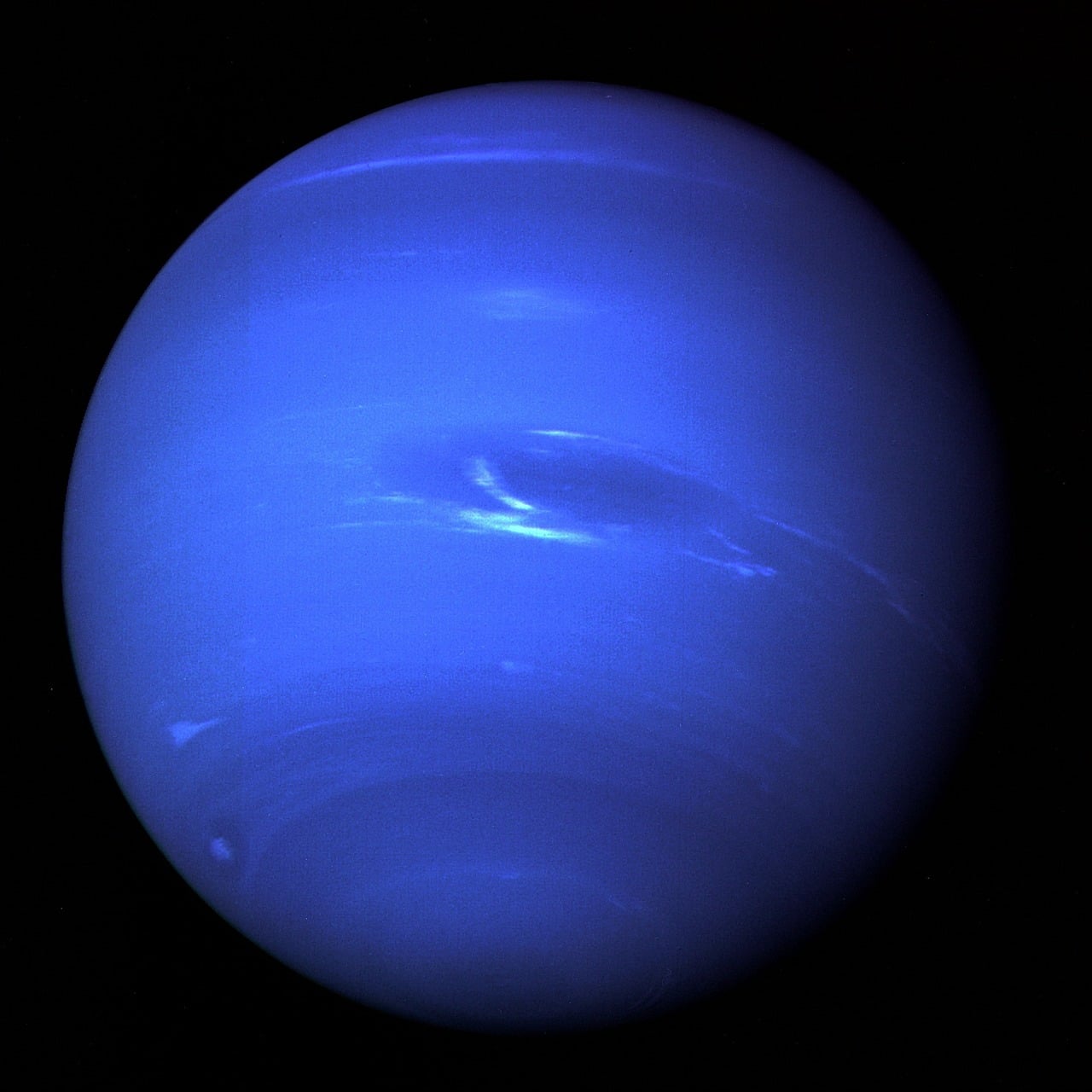NASA’s Hubble Space Telescope took pictures of Neptune’s dark storm slowly shrinking. NASA’s scientists watched the broadcasting by the telescope, and observed this kind of event for the first time. This is not the first large storm recorded in our solar system. One of the most famous storms is raging on the largest planet in our solar system, Jupiter, and it’s called the “Great Red Spot.” What makes the dark vortex on Neptune interesting is that according to the scientists, the storm probably has an unpleasant smell.
Originally, Neptune’s dark storm started out quite large, and it measured as wide as the Atlantic Ocean. However, thanks to NASA’s Hubble Space Telescope scientists discovered that this dark spot on the farthest planet in the solar system continues shrinking, according to NASA’s statement.
Storms have come and gone in the decades since NASA’s Voyager 2 spacecraft came close to Neptune, according to NASA, but this is the first time that they have seen a storm shrink and disappear.
“Like Jupiter’s Great Red Spot, the storm swirls in an anticyclonic direction and is dredging up material from deep inside the ice giant planet’s atmosphere,” NASA’s statement reads. Also, it probably smells really bad: “The dark spot material may be hydrogen sulfide with the pungent smell of rotten eggs.”
Researchers published their findings in a study in the Astronomical Journal, and according to the study, while they observe the storm shrink and eventually fade into oblivion, it provides some key information about the way Neptune’s weather system works, and sheds light on its violent winds. At the moment, astronomers don’t know much about the forming of these huge storms and their movement. This way they now hope to learn more about what’s exactly going on in the storms.
“Many questions remain as to how dark vortices originate, what controls their drift and oscillation, how they interact with the environment, and how they eventually dissipate,” authors wrote in the paper. “Vortex behavior also provides insight into the structure and dynamics of the surrounding atmosphere.”
So far, researchers are observing something that they didn’t previously expect. According to their predictions, the anticyclone would move toward Neptune’s equator and would break apart, which would “perhaps create a spectacular outburst of cloud activity,” researcher Michael H. Wong was quoted in the NASA statement. Instead, it is showing that the storm is moving south.
“Unlike Jupiter’s [Great Red Spot], the Neptune spot is not as tightly constrained by numerous alternating wind jets (seen as bands in Jupiter’s atmosphere),” the space agency noted. “Neptune seems to only have three broad jets: a westward one at the equator, and eastward ones around the north and south poles. The vortex should be free to change traffic lanes and cruise anywhere in between the jets.”





